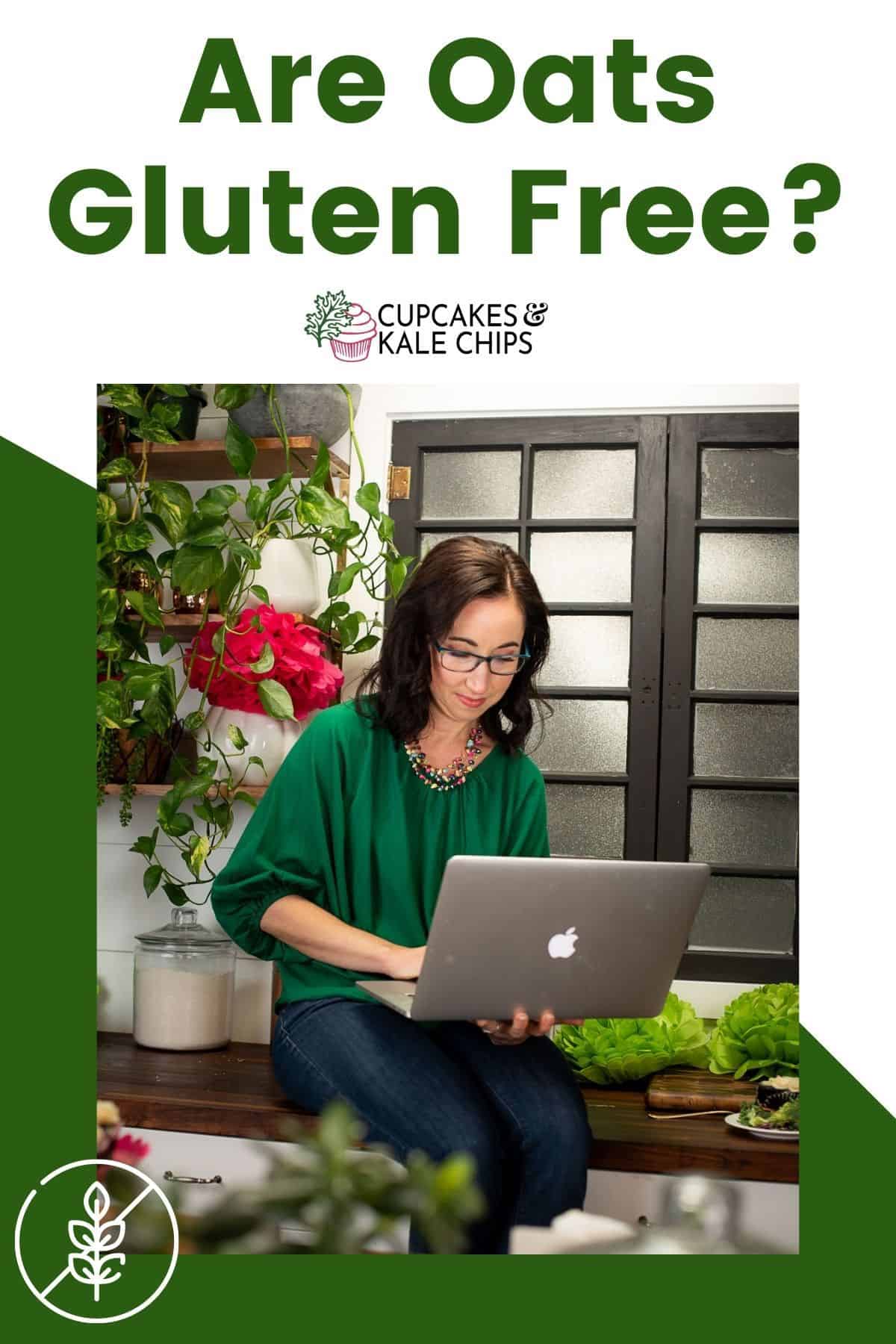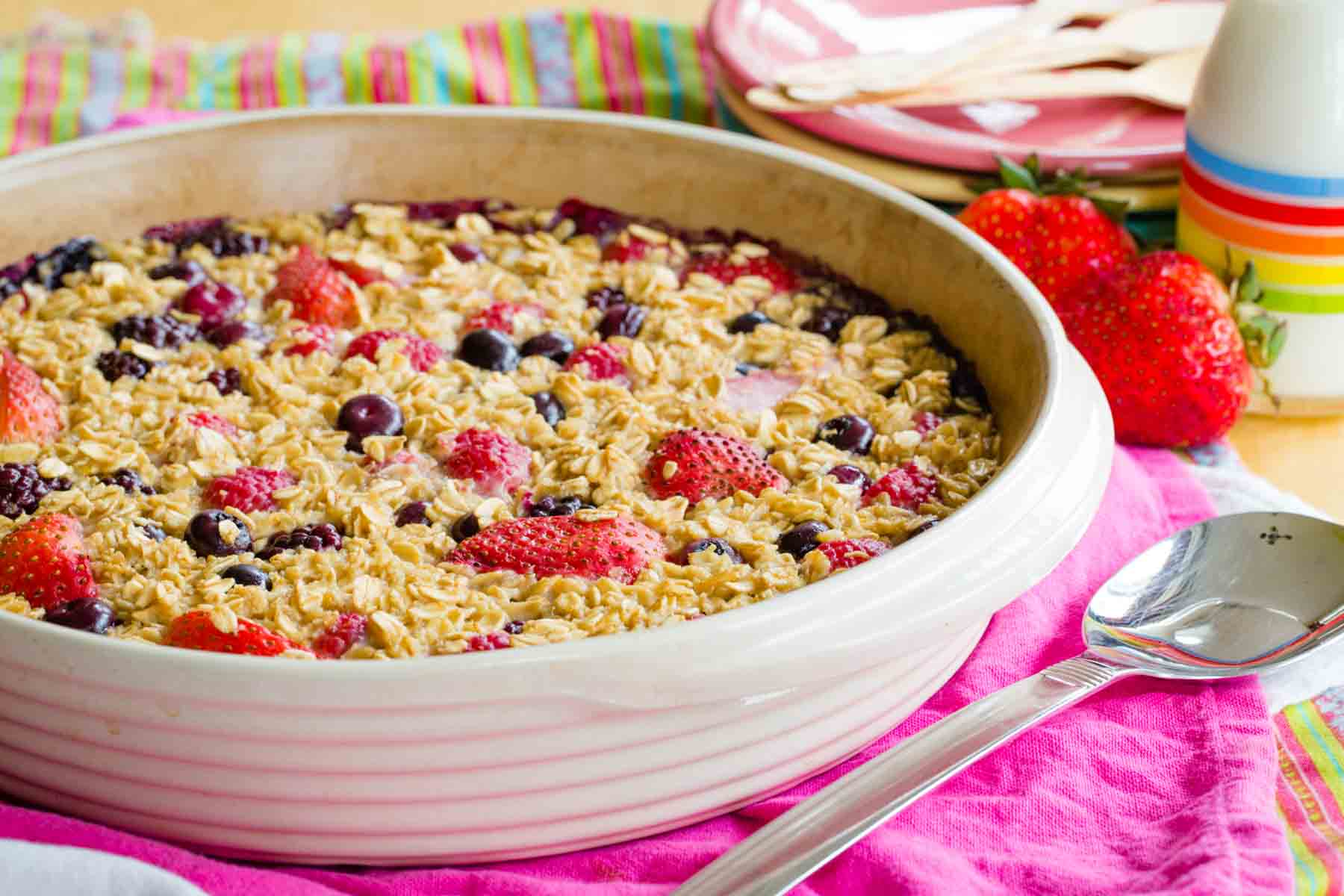


If you’re wondering whether oats are gluten free, use this resource to learn everything you need to know about safely eating oats on a gluten free diet, cross-contamination and safety for people with celiac.

First things first, the answer to the question, “Are oats gluten free” is “it depends”. Some oats are gluten-free and safe for people with celiac, but not all. The only way to know for sure that your oats are compatible with a gluten-free diet is to carefully read the label. Gluten-free oats will always have a label that says so.
If you don’t see a gluten free label, it’s best to assume that the oats do contain gluten, as they may be contaminated with gluten-containing ingredients like wheat.
There are several different kinds of oats that you’re likely to encounter in the supermarket. These include:
You will also find oat bran, which is the isolated bran from the groats, and oat flour. This is a fine, powdery flour made from whole oats. If it’s gluten-free, it’s great for GF baking.
While oats themselves do not contain gluten, cross-contamination during the production process can occur. In many cases, oats are grown, harvested and produced alongside gluten-containing products like wheat and other grains.
This cross-contamination, or cross-contact, can result in trace amounts of gluten in packaged oats.
Depending on the severity of your sensitivity to gluten, you may or may not have to worry about cross-contamination. If you have celiac disease, you need to avoid gluten at all costs, even trace amounts. In that case, always choose certified gluten-free oats.
On the other hand, if you have a mild gluten sensitivity, you may not experience any symptoms from eating regular oats. Of course, for added protection, it’s best to choose gluten-free or certified gluten free oats. They are generally easy to find at most grocery stores and online.
Curious about oat milk too? Read Is Oat Milk Gluten Free?

When shopping for oats, there are a few labels to look for to ensure that you’re getting the highest quality oats with the lowest risk for cross-contamination.
These labels are:
These words indicate that an oat producer is following the purity protocol used by growers in the US and Canada. While there’s no formal definition or governing body overlooking the use of these terms, in general, pure oats are grown in a gluten-free field and produced “under good manufacturing practices (GMPs) to minimize the presence of gluten”. They are considered safe for people with celiac disease.
This label indicates that oats are grown and processed separately from gluten-containing products. Some oats labeled gluten-free have been mechanically cleaned and separated after harvesting to remove traces of gluten. This label is regulated by the FDA, though it’s a voluntary label by food manufacturers.
Foods with the label “gluten free” or “free from gluten” cannot contain more than 20 parts per million of gluten.
This is a third-party certification. A product can meet the FDA’s gluten free standards and go a step further to engage a third-party certification body. These include the Gluten-Free Certification Program, which audits food manufacturers, transporters, and end-producers at every step along the supply chain to ensure proper handling to minimize gluten exposure. Oats with this label are safe for people with celiac disease.
At the end of the day, the supply chain is complex and spread out. It can be nearly impossible to remove all trace amounts of gluten from a product grown in a field. So to minimize your exposure to gluten, your best bet is to limit your consumption of oats and always choose gluten free.

Wondering about cereal too? Learn What Cereals are Gluten Free!

Welcome to Cupcakes & Kale Chips, where I share gluten free recipes & kid-tested family favorites!
